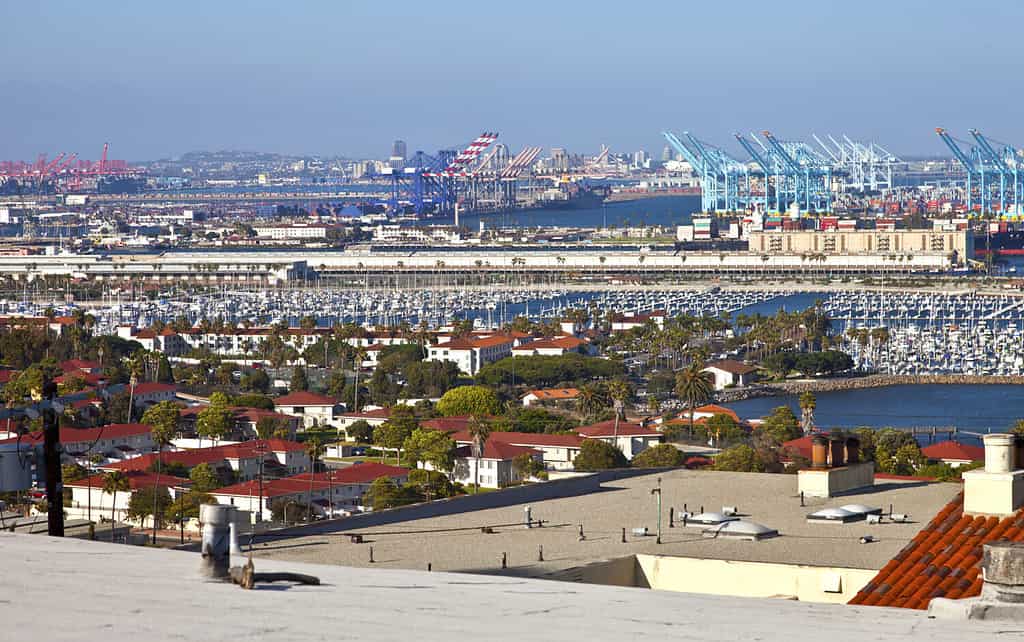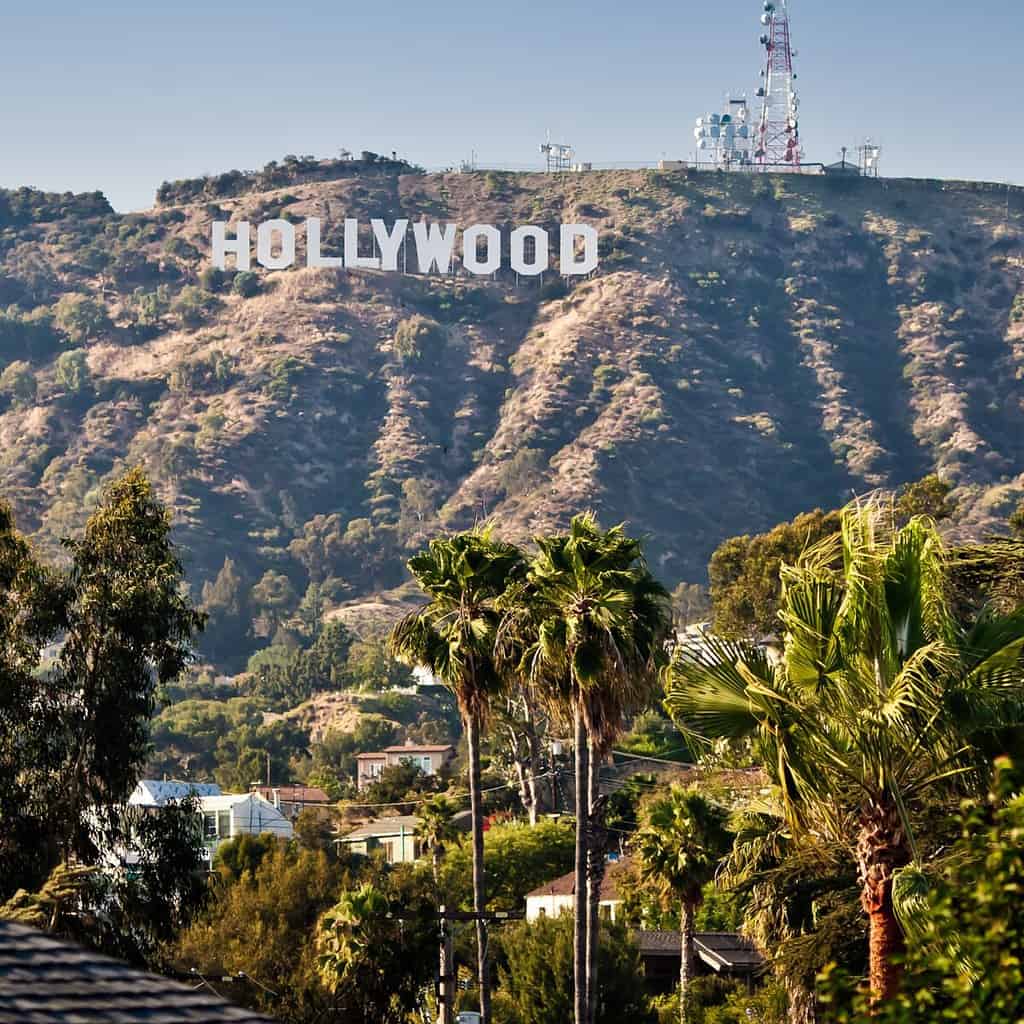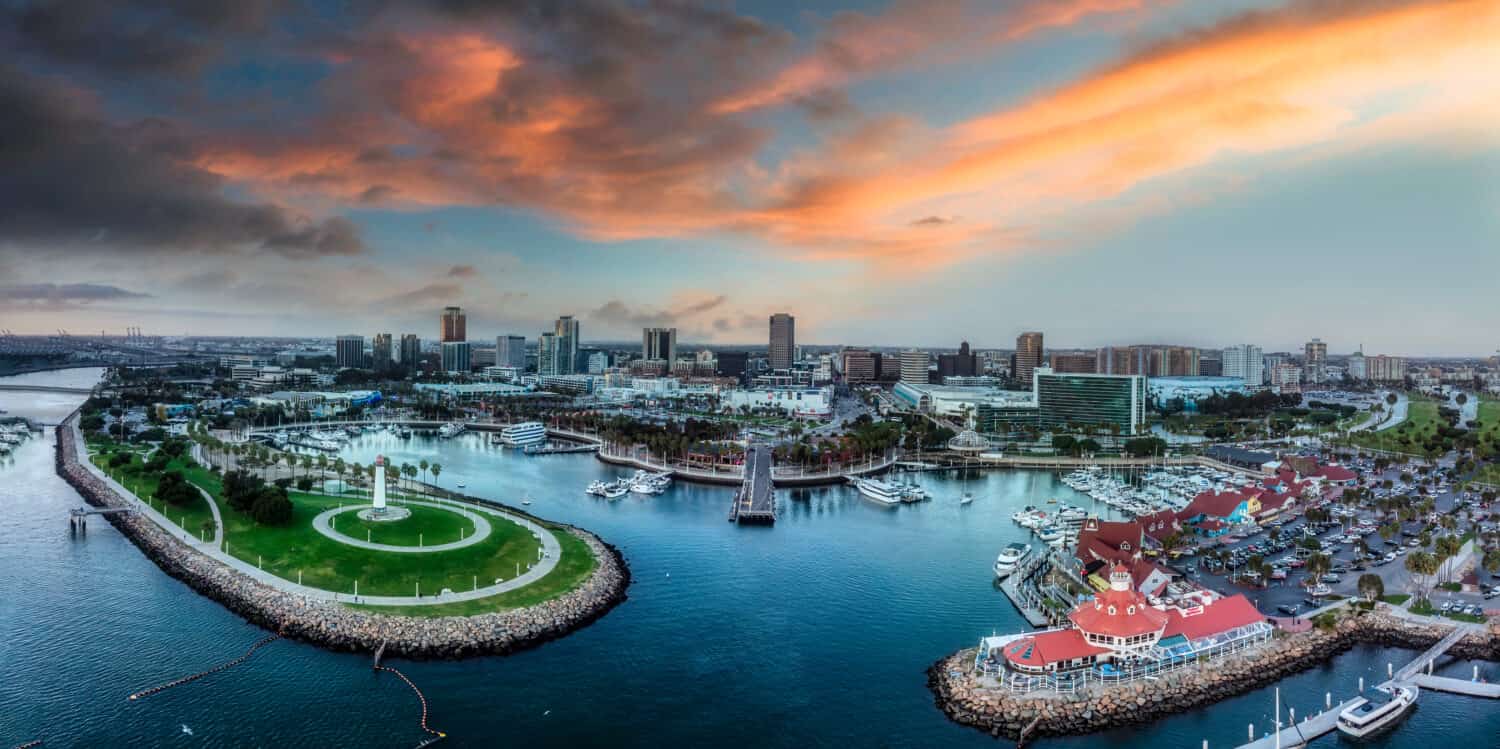The great state of California hosts 482 cities. California is the most populated state in the United States, along with being the third largest in area. Today, we’re going to take a closer look at just one of the many cities in the state – Long Beach. Long Beach is a city in the southern portion of the state, and we’re going to look at its precise location, some interesting information about it, and its proximity to other well-known cities in California. So let’s get started with answering our big question – where is Long Beach?
Where is Long Beach on a Map?
Long Beach, California is a coastal town that rests directly south of Los Angeles, California. It is accessed by many highways, including the famous Highway 1, which traverses the entire coast. The city sits between Torrance, California, and Huntington Beach, California. Let’s look at it on this handy interactive map!
Population of Long Beach

The port of Long Beach is one of the most active commercial ports in the United States.
©Rigucci/Shutterstock.com
The overall population of Long Beach – as of the 2021 United States Census – is 456,062. The city has a very diverse population and gives a home to people of several nationalities. 47 percent of the city population is white, while 43.9 percent is Hispanic or Latino. About 12 percent of the population is Black or African American and 13 percent are Asian. From 2017-2021, there were 169,958 households with an average of 2.69 people per household.
The average income in Long Beach is $31,609, while the cost of living is incredibly high. The 30% rule for rent dictates that you shouldn’t spend more than one-third of your overall gross income on rent. Following this rule, the average individual needs to make $5,281 dollars a month or $63,380 to live comfortably in the city. Payscale estimates that the cost of living in Long Beach is 51 percent higher than the national average. Perhaps this is why Long Beach has a significantly elevated poverty rate – 15.4 percent compared to the national average of 11.5 percent.
History of Long Beach
Long Beach was originally a Native American trading camp. This is true of many towns and cities across the nation. The area where the city is now was undiscovered by European Settlers until the 1500s. Spanish Explorer Juan Rodriguez Cabrillo was the first known European to reach the area, and he called it the “Bay of the Smokes”. He gave it this name because of the ancient communication of smoke signals that the Indigenous people used.
The area remained under Spanish dominion for quite a long time. In the 1700s, it was split in two, one portion called Rancho Los Alamitos and the other being dubbed Rancho Los Cerritos. The first school and set of homes didn’t occur until the 1880s when William Wilmore developed the area. It was renamed Wilmore City in his honor, but this name was short-lived. As the population grew rapidly, so did the desire for a new name. Soon, it got the name it carries now and became the City of Long Beach.
Then followed the oil boom of the 1920s, which drew an even larger population and triggered millions of dollars of construction where downtown rests now. This is how Long Beach became a popular city to visit or live in, though the town was hit with some setbacks, including the 6.4 magnitude earthquake that rocked the foundations of the city in 1933. because of this earthquake, all schools in California are now required to be earthquake-resistant in design. Now, Long Beach is a popular destination still, and millions of people per year visit or pass through the city.
Industry in Long Beach
Long Beach has a wide variety of industries, which is fairly common in large California cities. This variety of industry gives several opportunities to people from all walks of life. Some of the major industries of the city include financial services, health care, aviation and aerospace, tourism, and oil. There is also a lot of focus on trade and technology. Boeing and the Aquarium of the Pacific are both major employers in the area, along with the Long Beach Chamber of Commerce and the Long Beach Memorial Hospital.
How far is Long Beach From Other California Cities?

Los Angeles, California is the nearest large city to Long Beach – only 24 miles away.
©Andrey Bayda/Shutterstock.com
Long Beach rests quite close to the largest city in California – and one of the largest in all of the United States. Los Angeles, California is the largest city in California by both area and population, and Long Beach is very close to this mighty city. In fact, it is only 24 miles south of the “City of Angels” – about a 29-minute drive in clear traffic. Let’s look at a table of other major cities in California and their proximity to Long Beach.
| City | Population | Distance from Long Beach |
|---|---|---|
| San Diego | 1.3 million | 111 miles |
| San Francisco | 815,201 | 405 miles |
| Sacramento | 525,041 | 408 miles |
| Crescent City | 6,676 | 752 miles |
| Fresno | 544,510 | 242 miles |
What is Long Beach Known for?
Since the city is situated along the coast, a lot of the best attractions are on the waterfront. One notable attraction is the RMS Queen Mary, a British ocean liner ship that sailed from 1936 to 1967. Now it permanently rests in Long Beach and serves as an attraction, a hotel, and a special events venue. The ship is in a league all of her own for her size and speed. She spent a stint of time as a war troopship, and she could carry as many as 16,000 troops at once while still moving at a speed of 30 knots. That’s about 34.5 miles per hour, which may seem slow for a passenger vehicle but is impressively fast on the high seas. This historic ship has transported over two million passengers and about 810,000 military personnel. Since her retirement, it is estimated that she has been toured by 50 million people!
The RMS Queen Mary is not the only attraction worth visiting in the area, nor the only one bringing fame to Long Beach. The Aquarium of the Pacific is a world-famous aquarium that offers visitors an educational gateway into the Pacific Ocean. The aquarium’s “About” page states that “the Aquarium of the Pacific has redefined the modern aquarium.”
Long Beach also has one of the busiest commercial seaports in the entire world. The coastal city averages 345 days of sunshine a year and is home to a very socially diverse population. In fact, the city prides itself on its LGBTQIA2S+ inclusivity and celebration. The city hosts an abundance of theater companies and music venues along with reveling in a tremendous art scene that includes community members and art museums. One such museum is the Long Beach Museum of Art.
Wildlife in Long Beach

The waters around Long Beach are a generally happy habitat for sea lions.
©iStock.com/Delpixart
Long Beach has an excellent habitat for marine animals, such as the sea lion. Dolphins, gray whales, and thousands of varieties of fish swim in the salty ocean water. The area is also home to a wide variety of land critters, such as opossums, skunks, raccoons, coyotes, squirrels, and bats. There are reports that coyotes are appearing in larger numbers in the last several years. This is a growing concern for residents of the city.
Long Beach is a birdwatcher’s paradise. This is due, in part, to the wetlands in the city. Los Cerritos Wetlands provides a wonderful sanctuary for local and migratory species, including herons and pelicans. Over 300 different species of birds live and thrive in Long Beach, so you’ll be at no shortage of beautiful spotting opportunities. You may see a trumpeter swan or a red-breasted sapsucker. Visitors may also be lucky enough to spot an owl or another variety of raptors. You can hike the area or explore by kayak. Either way, you’re in for an absolute treat if you love outdoor recreation and wildlife viewing.
Always remember to keep a safe distance from wildlife. Wild animals are just that – wild. This means they need undisturbed natural habitats and lots of respect and space to thrive. Some animals pose a risk to humans upon close contact but, more likely, are heavily impacted by human contact and intervention. We can do our part by not touching or feeding them and cleaning up our trash when we visit their homes.
Thank you for reading! Have some feedback for us? Contact the AZ Animals editorial team.








